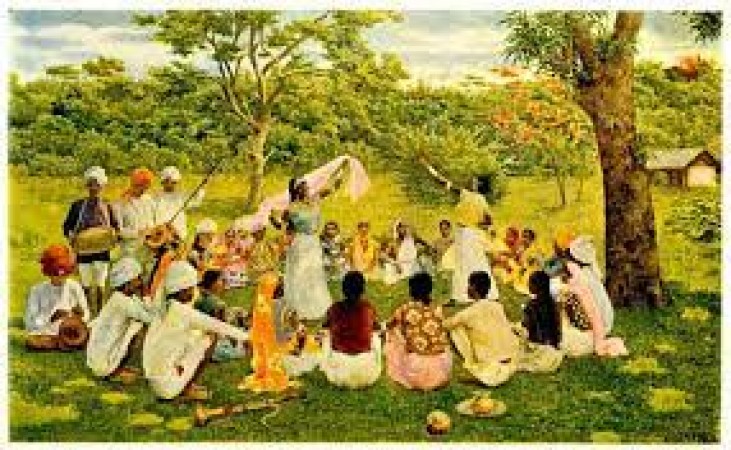
Overseas migration, the act of leaving one's home country to settle in a foreign land, is a complex and life-changing decision that millions of people make each year. This phenomenon is driven by various factors, including economic opportunities, seeking asylum, reuniting with family, or simply pursuing a better life. Behind these statistics and numbers are compelling stories of courage and struggle that illuminate the human experience and our shared journey as a global community.
Section 1: The Decision to Migrate
The decision to migrate is never taken lightly, and it is often influenced by a multitude of factors. Economic reasons, such as seeking better job prospects or escaping poverty, drive many to embark on the challenging journey. Additionally, political instability, social unrest, and environmental disasters can force individuals to seek safety and security abroad. The brave individuals who decide to leave their familiar surroundings behind for a chance at a brighter future deserve recognition and respect.
One such individual is Maria, a young woman from a small village, who chose to migrate to a distant land to escape the cycle of poverty. Despite facing numerous hurdles, including opposition from her family, Maria's determination led her to a foreign country where she worked hard to build a new life and support her loved ones back home.
Section 2: The Journey Begins
The migration process itself is riddled with challenges, making the journey a true test of one's resilience and adaptability. Legal and documentation hurdles can create obstacles, making it essential for migrants to navigate complex bureaucratic systems. Financial struggles often accompany the journey, as many migrants embark on their ventures with limited resources.
Language and cultural barriers also pose significant challenges, as individuals must learn to communicate effectively and adapt to new social norms. Additionally, the emotional toll of leaving family and friends behind cannot be underestimated. Despite these adversities, countless migrants have demonstrated exceptional strength and perseverance.
One such inspiring account is that of Ahmed, who left his war-torn homeland to find safety and freedom in a foreign land. His journey involved perilous voyages and encounters with hardships, but his unwavering spirit kept him going. Today, Ahmed is not only successfully integrated into his new society, but he has also become a source of support for other refugees.
Section 3: Settling in a New Land
Settling in a foreign country brings its own set of challenges. The cultural shock and the need to adapt to a different way of life can be overwhelming. Finding employment, suitable housing, and accessing essential services can be daunting tasks for newcomers.
However, amidst the struggles, there are stories of migrants who have embraced their new homes with open hearts and minds. Anna, for instance, moved to a foreign country as a student and decided to stay after falling in love with the culture and the people. Her journey of integration was filled with ups and downs, but her determination to belong and contribute to her new community helped her overcome obstacles.
Section 4: Nostalgia and Adaptation
For many migrants, a deep sense of nostalgia for their homeland persists even as they adapt to their new lives. Balancing dual identities and navigating between two worlds can be emotionally challenging. However, this sense of duality can also be a source of strength, enriching the lives of migrants and their communities.
An example of such strength is Carlos, who migrated to a foreign country as a child with his family. As he grew up, he struggled with his identity and a longing for his birthplace. Eventually, Carlos embraced both cultures, becoming a bridge between two worlds, and now actively promotes cross-cultural understanding.
Section 5: Impact on Families and Communities
Migration has a profound impact not only on the individuals who undertake the journey but also on the families and communities left behind. For families, the departure of a loved one can bring about emotional and financial challenges. However, remittances sent by migrants back home can play a crucial role in supporting families and local economies.
Moreover, many migrants maintain strong ties to their home countries and contribute to their development through various means. They become ambassadors of their culture and heritage, fostering connections between different nations.
Section 6: Addressing Challenges and Building a Better Future
Understanding the stories of courage and struggle behind overseas migration should inspire us to address the challenges faced by migrants and build more inclusive societies. Governments and organizations can play a significant role in providing supportive policies, affordable legal assistance, and programs that facilitate integration and cultural understanding.
By recognizing the strength and determination of migrants, we can break down barriers and create a world where everyone can thrive. Let us draw inspiration from the countless stories of courage and struggle and work together to build a future where migration is not seen as a burden but as an opportunity for growth and unity. Overseas migration is a testament to the indomitable human spirit. The stories of courage and struggle behind this global phenomenon showcase the triumph of hope over adversity. Each migrant's journey is unique, and their experiences teach us the value of compassion, resilience, and cultural exchange. Let us embrace these stories and celebrate the diverse tapestry of human existence. By doing so, we can foster a world where migration is seen as an enriching experience that brings us closer together as one global family.
Josephine Chaplin, Actor and Daughter of Charlie Chaplin no more!
Govt Action Looms for Twitter after Viral Video of Manipur Women Paraded Naked
Manipur Unrest: CM Urges Thorough Probe into Viral Video's Authenticity